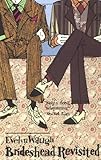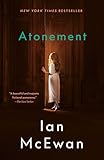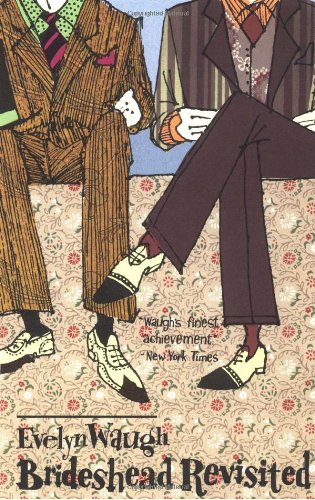I’ve always had a soft spot for the sweeping multi-generational family saga. I’m continually amazed that a good writer can will us to abandon one protagonist for another, the father for the son; we hesitate, but a hundred pages later, we’ve forgotten the earlier generations as quickly as history does itself. But there’s something a little cruel in this sort of book: it’s not history — it’s a novel, and its ironic circumstances are wholly constructed. The innocent early days, the invariable fall, the important details that get distorted and misplaced over time: the author is setting us up, and the book would be innocuous — even pointless — if we weren’t eventually let down. These books are inherently about loss: the characters we meet at the beginning will die, or if they don’t, something else will be lost to the passage of time.
 Alan Hollinghurst’s new novel, The Stranger’s Child, is one of those sweeping multi-generational family sagas, and, of course, Hollinghurst is one of those writers who can do most things remarkably well. It’s as beautifully written as his previous books, but it feels like a departure: the last four have been relatively stationary affairs in comparison, centering around young, gay Englishmen with a lot of time on their hands, and the narratives are largely expository and internal. I’ve read three out of four — the friend who eagerly pressed Hollinghurst on me years ago agreed with the critics and told me to skip The Spell — and of them, the 2004 Booker Prize-winning The Line of Beauty had been my (well, everyone’s) hands-down favorite.
Alan Hollinghurst’s new novel, The Stranger’s Child, is one of those sweeping multi-generational family sagas, and, of course, Hollinghurst is one of those writers who can do most things remarkably well. It’s as beautifully written as his previous books, but it feels like a departure: the last four have been relatively stationary affairs in comparison, centering around young, gay Englishmen with a lot of time on their hands, and the narratives are largely expository and internal. I’ve read three out of four — the friend who eagerly pressed Hollinghurst on me years ago agreed with the critics and told me to skip The Spell — and of them, the 2004 Booker Prize-winning The Line of Beauty had been my (well, everyone’s) hands-down favorite.
 But The Stranger’s Child seems as if it’s been written for me — or, at least, someone with my proclivities — with its somewhat traditional subject and straightforward narrative, a plot that moves on dialogue rather than description, and a pervasive Englishness, reserved and class-bound, that encompasses whole swaths of 20-century British literature. Parts of it, to my delight, feel very much like Brideshead Revisited fanfiction — in the best possible way, of course. (Who didn’t want more of “those languid days at Brideshead,” to actually see what Charles and Sebastian were surely getting up to that summer?)
But The Stranger’s Child seems as if it’s been written for me — or, at least, someone with my proclivities — with its somewhat traditional subject and straightforward narrative, a plot that moves on dialogue rather than description, and a pervasive Englishness, reserved and class-bound, that encompasses whole swaths of 20-century British literature. Parts of it, to my delight, feel very much like Brideshead Revisited fanfiction — in the best possible way, of course. (Who didn’t want more of “those languid days at Brideshead,” to actually see what Charles and Sebastian were surely getting up to that summer?)

 The book’s been repeatedly compared to the work of Evelyn Waugh, E. M. Forster, and, as with Hollinghurst’s previous novels, Henry James, as well as that of contemporaries like Ian McEwan (for Atonement, which, on the surface, has many similarities) and Kazuo Ishiguro (for The Remains of the Day). But Hollinghurst brings a precise elegance to the genre, building upon the novels that came before it. In an essay on Atonement written a decade ago, Geoff Dyer said that, “It is less about a novelist harking nostalgically back to the consoling certainties of the past than it is about creatively extending and hauling a defining part of the British literary tradition up and into the twenty-first century.” Hollinghurst, rarely transgressive, occasionally labeled as “fusty,” but an unfailingly extraordinary novelist, is extending and hauling Brideshead into the present day. (Dyer had high praise for The Stranger’s Child and its author: in a review, he wrote that “Hollinghurst, the gay novelist, might also be the best straight novelist that Britain has to offer.”)
The book’s been repeatedly compared to the work of Evelyn Waugh, E. M. Forster, and, as with Hollinghurst’s previous novels, Henry James, as well as that of contemporaries like Ian McEwan (for Atonement, which, on the surface, has many similarities) and Kazuo Ishiguro (for The Remains of the Day). But Hollinghurst brings a precise elegance to the genre, building upon the novels that came before it. In an essay on Atonement written a decade ago, Geoff Dyer said that, “It is less about a novelist harking nostalgically back to the consoling certainties of the past than it is about creatively extending and hauling a defining part of the British literary tradition up and into the twenty-first century.” Hollinghurst, rarely transgressive, occasionally labeled as “fusty,” but an unfailingly extraordinary novelist, is extending and hauling Brideshead into the present day. (Dyer had high praise for The Stranger’s Child and its author: in a review, he wrote that “Hollinghurst, the gay novelist, might also be the best straight novelist that Britain has to offer.”)
The novel begins in the summer of 1913 at Two Acres, the home of the Sawle family in outer London. The initial Brideshead parallels are reversed: the family is middle class and their houseguest, Cecil Valance, is an aristocrat. He’s a mediocre but deeply charming poet, and during the visit he puts aggressive but rather tame moves on the impressionable Daphne, all the while having it off properly in the woods with her brother, George. Cecil is killed in World War I, as are other characters from the idyllic opening passages, and most of them fade into obscurity by the second part, set a decade later. But Cecil is remembered, even revered: celebrated as a minor war poet, he’s quoted by Winston Churchill in the newspaper and viewed, as with so much of the late-Edwardian canon, as prophetic.
The remaining three sections make similarly brash leaps forward in time: the mid-1960s, then the early ‘80s, and finally, briefly, in the present day. Nearly a century after the initial action, all of our old friends have died. It’s inevitable, but it leaves you feeling a little cheated. With each transition you struggle with momentary disorientation, taking stock of who’s still alive and the family entanglements that have grown more complicated in the intervening decades. In a book where sexuality is surprisingly fluid and loyalties often waver, deciphering the two families’ domestic affairs is a tall order, and at times, a frustrating one. The more interesting changes are subtler: with the passage of time, characters’ histories are rewritten. Those who survive — and a surprising number of early characters make it well into old age — come to be defined by the decades through which they’ve lived. But those who died remain crystallized in memories, tinted and warped with nostalgia or bitterness. Misunderstandings and assumptions in 1913 become reminisces in the ‘20s, memories in the ‘60s, vague recollections in the ‘80s, and all but completely forgotten in the present day.
At the heart of these rewritten histories is literature: this is, after all, a book about a poet, and eventually, a book about books. The fourth and, at times, most tedious section, follows a biographer’s somewhat incompetent attempts to unravel Cecil Valance’s short life. Valance’s brother, Dudley, who winds up marrying Daphne, is a writer as well, but by the ‘80s, his work has faded from public consciousness. Daphne writes a book that is dismissed for its factual inaccuracies; she thinks back later about how her memories, cloudy with years of heavy drinking, are just as inaccurate: “The fact was that all the interesting and decisive things in her adult life had happened when she was more or less tight: she had little recall of anything that occurred after about 6:45, and the blur of the evenings, for the past sixty years and more, had leaked into the days as well.” The elderly characters, with their shaky recollections, leave you immensely frustrated: “I was there!” you want to shout. “Four hundred pages ago! Don’t you remember?” And when Daphne continues on, worrying over lost memories, the resulting passage is heartbreaking:
She felt something similar, but worse in a way, about hundreds and hundreds of books she’d read, novels, biographies, occasional books about music and art — she could remember nothing about them at all, so that it seemed rather pointless even to say that she had read them; such claims were a thing people set great store by but she hardly supposed they recalled any more than she did. Sometimes a book persisted as a colored shadow at the edge of sight, as vague and unrecapturable as something seen in the rain from a passing vehicle: looked at directly it vanished altogether. Sometimes there were atmospheres, even the rudiments of a scene: a man in an office looking over Regent’s Park, rain in the streets outside — a little blurred etching of a situation she would never, could never, trace back to its source in a novel she had read some time, she thought, in the past thirty years.
A bleak epigraph marks the start of the book’s final section: “No one remembers you at all.” It’s from Mick Imlah’s poem “In Memoriam Alfred Lord Tennyson” (the phrase “the stranger’s child” is from Tennyson’s “In Memoriam A.H.H.”). Imlah passed away two years ago, and Hollinghurst has dedicated this book to him. There’s something so grim about the idea that even books will be forgotten: memory is fickle, sometimes faulty, but shouldn’t something printed and bound hold more permanence than that? In the final scenes, we follow a relative stranger into an antiquarian bookshop, and there’s a moment of hope that the characters that were scribbling away dozens of chapters ago will be remembered. At one point very early on, a character says that Cecil’s poems “will be read for as long as there are readers with an ear for English music, and an eye for English things.” A century later, this seems doubtful: he is known, but he is barely remembered. The First World War, which feels palpably less present with each step forward in time, is now firmly in the past.
A book of this scope writes its own history, and if you find that history compelling, you’re doomed to fall in love with it. This was the first novel in a long while that pulled me in wholeheartedly: I stayed in on the weekend, and didn’t grumble about getting stuck on the train one night, just to finish it faster. I’ve pressed it on people at work, on friends at parties, and on strangers in coffee shops. The majority of them have never heard of it, or even of Hollinghurst himself. When I finished it, I went to look it up on Wikipedia, to read about its influences (cross-referenced, I assumed, with all the historical cameos, Rupert Brooke and Lytton Strachey and the like). Instead I found a skeletal plot summary and a brief paragraph on the reviews (“generally received positively”). I was indignant. Why wasn’t it tagged as an “instant classic”?
We live in a time when things struggle to stick: competing influences, recommendations, and links, bombarding us and casting aside one new thing for the next. But perhaps one of the best lessons to be learned from The Stranger’s Child is that things have never stuck particularly well. People and their words can tilt the world on its axis, however briefly, but the world will always tilt again. Imagining not remembering a thing about The Stranger’s Child decades from now, of it falling out of print, of Hollinghurst fading into obscurity, is hard for me to comprehend. But Hollinghurst’s characters carried some version of Cecil Valance with them through the stretch of their long lives. It seems difficult to imagine that we wouldn’t take all of these characters with us through our lives in turn.






